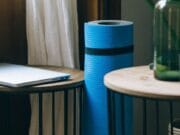Cost-Effective Home Gym Construction Without Compromising Quality
Building a home gym can be one of the best investments you can make for your health adn fitness. However,many individuals hesitate to pursue this option due to fears about costs.In this article, we will explore how to construct a cost-effective home gym that doesn’t compromise on quality, while also providing valuable tips, benefits, and real-life experiences.
The Benefits of a Home Gym
A home gym offers several advantages over customary gym memberships:
- Convenience: No more commuting; you can workout on your own schedule.
- Cost Savings: After the initial investment, you won’t pay monthly fees.
- Personalization: Customize your space and equipment according to your preferences.
- Privacy: Enjoy workouts without the intimidation of crowds.
Planning your Home Gym
1. Define Your Space
The first step in constructing a home gym is to choose the right location. factors to consider include:
- Available space: Spare bedrooms,garages,or basements are ideal.
- Lighting and ventilation: Ensure the area is well-lit and air-conditioned.
- Noise considerations: Avoid setups near bedrooms or common areas to minimize noise disruption.
2. Set a budget
Determining your budget upfront is essential for cost-effective construction. Break down your budget into categories:
- Space renovation (if needed)
- Equipment purchases
- decor and flooring
- Miscellaneous (like mirrors, mats, etc.)
| Item | Est. Cost ($) | Notes |
|---|---|---|
| Space Renovation | 500 – 1000 | Depends on the current state of your space. |
| Equipment | 300 – 2000 | Prioritize based on your fitness goals. |
| Flooring & Decor | 200 – 500 | Consider rubber mats for safety. |
| Miscellaneous | 100 – 300 | Includes storage and accessories. |
Choosing Quality Equipment on a Budget
Investing in quality fitness equipment does not have to break the bank. Here’s how to get the best value:
1. Do Your Research
Research various brands and read customer reviews. High-quality equipment will often yield a higher return on investment and last longer.
2. Prioritize Essential Equipment
Consider starting with a few essential pieces that cater to a wide range of workouts:
- Dumbbells or Kettlebells: Versatile and great for strength training.
- Resistance Bands: Cost-effective tools for strength training.
- Yard Space or Pilates Mat: Perfect for exercising, stretching, and floor work.
- Cardio equipment: Consider a jump rope or a used treadmill for cardiovascular workouts.
3. Consider Second-Hand Equipment
Buying second-hand equipment can save you a notable amount of money. Websites like Craigslist, Facebook Marketplace, and local gym sales can be a treasure trove for quality gear at reduced prices.
Designing Your home Gym Layout
Once you have your equipment, it’s crucial to create an efficient layout. Consider the following:
1. Space Flow
Ensure there is ample space between equipment for safety and ease of movement. Plan your layout based on the most common exercises you will perform.
2. Functionality
Incorporate different zones for strength training, cardio, and flexibility work. A well-functioning layout enhances your workout experience.
Practical Tips for Saving Costs
- DIY Solutions: consider making your own weights using concrete blocks or water jugs.
- Membership Cancellation: If you decide to go all-in on your home gym, cancel your existing gym membership to save costs.
- Utilize Online Resources: Use free workout videos and fitness apps instead of paying for classes.
Real-Life Case Studies
Here are two brief success stories from individuals who built their dream home gyms without overspending:
Case 1: The Budget Fitness Enthusiast
John transformed his unused garage into a extensive gym for just $700. He focused on multi-functional equipment and painted the walls to create an inviting atmosphere, increasing his workout consistency considerably.
Case 2: The Family Fitness Hub
Emily utilized a spare room to create a family-friendly gym that cost her $1200. By incorporating a mix of strength and cardio equipment, along with a play area for her kids, she made fitness a fun family activity.
Conclusion
Creating a cost-effective home gym without compromising quality is entirely achievable with careful planning and smart choices. By defining your space, setting a budget, choosing essential equipment, and being resourceful, you can build a functional fitness sanctuary tailored to your personal needs. Start your fitness journey today and enjoy the benefits of a home gym that not only saves you money but enhances your overall lifestyle!




















